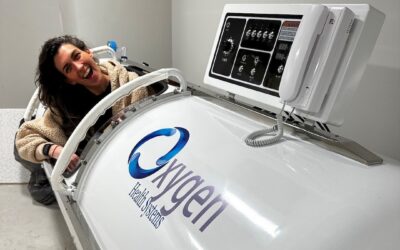Summer is here, and for many, this means more time spent outside. While warmer weather and longer days allow us to enjoy more outdoor activities this also comes with increased exposure to the sun’s UVA and UVB rays.
This can have both positive and negative effects on our overall health. You may already know that sun exposure can be very damaging to the skin when it’s excessive. However, some sun exposure is necessary for overall health and wellness. The trick is finding a healthy balance so that you can obtain the benefits of the sun without ruining your complexion.
Unless you never leave your house, completely avoiding the sun is not possible. Plus, it’s not even recommended! Moderate sun exposure has many proven benefits for your health including:
- Mood-boosting
- Sleep regulating
- Immune strengthening
- Cancer prevention
- Vitamin D production
About 15-30 minutes of sun exposure a day is recommended, and more can be tolerated with the application of proper SPF.
On the other hand, too much sun exposure increases the likelihood of sun damage such as wrinkles and hyperpigmentation. This is because UV radiation causes the skin to become deficient in Vitamin A, a skin normalizer and the most important vitamin for skin health. Also, UV radiation damages collagen and increases your chance of developing age spots and abnormal pigmentation.
So, what can be done to enjoy time outside on a beautiful summer day, maximize the health benefits of the sun, and still protect your skin from UV damage?
1.) Proper Sun Protection
This one might seem obvious, but it’s first on our list for a reason. On days that you will be outside for more than 15-30 minutes, proper sunscreen is absolutely necessary for avoiding sun damage. To protect against UVA Radiation, make sure to choose a sunscreen that is labeled broad-spectrum. The SPF on a bottle of sunscreen stands for Sunscreen Protection Factor and this number determines how well a sunscreen protects against UVB rays-the ones that can cause sunburn.
It is recommended to use an SPF of 15-50 for adequate sun protection. As a general rule of thumb, the lighter your skin is the higher your SPF number should be. In addition to proper sunscreen type, you must also follow correct sunscreen application and this is not as obvious to many. Most people don’t use enough sunscreen, and sunscreen doesn’t last as long as you might.
Regardless of SPF, you must apply at least 1 oz of sunscreen to exposed skin (This is about the size of an average shot glass). Also, what many people don’t realize, sunscreen only lasts about 90 minutes and even less if it’s not water-resistant. If you will be outside for longer than this then your sunscreen must be reapplied every 90-120 minutes to maintain skin protection.
Sunscreens like Environ RAD SPF 30 and PCA Hydrator Plus Broad Spectrum not only provide adequate protection but also contain antioxidants to protect from other forms of free-radical skin damage.
Additional ways to take care of your skin when outside for extended periods include protective clothing, hats, sunglasses, and time under the shade.
2.) Topical Vitamin A
In addition to daily sunscreen use, the ingredients in your daily skincare routine can go a long way in keeping your skin healthy this summer. One of the best ingredients for your skin is Vitamin A!
UV rays cause a depletion of Vitamin A in your skin even with sun protection. This is unfortunate because Vitamin A is essential for healthy skin and anti-aging. Some common signs of Vitamin A deficiency in the skin include: skin dehydration, acne, abnormal pigmentation, and accelerated skin aging. It’s important to supplement your skin with topical Vitamin A every day to avoid deficiency, but using the correct form of Vitamin A is important.
Some forms of Vitamin A such as retinol and retinoic acid sensitize your skin to light. This means that if you use products with these ingredients it’s best to completely avoid the sun to avoid unnecessary damage to the skin. In the summer, switch to forms of Vitamin A that do not sensitize the skin to light such as an ester form like retinyl palmitate or retinyl propionate.
3.) Avoid Treatments that Increase Photosensitivity
Even with daily sun protection sometimes it’s not possible to keep your skin 100% protected from the sun. That’s why it’s best to save more in-depth skin treatments for the Fall and Winter months. Summer is not the time for some skin resurfacing and rejuvenation therapies because they leave skin more delicate and sensitive for several weeks post-treatment. Laser treatments and peels work by inducing controlled energy to the top and middle layers of the skin.
The skin needs time to heal after treatment and is easily damaged by sun exposure. This is why it’s not recommended to receive deeper peels or any sort of laser treatment during the summer months. The risks outweigh the benefit and include unwanted side effects such as abnormal pigmentation changes, photodamage, and burns.
However, there are many other rejuvenating treatments that are both beneficial and safe to receive all summer long. Instead of lasers and peels, opt for anti-aging treatments that do not include sun exposure as a contraindication. This could include collagen induction therapies such as Dermafrac, microneedling, and radio frequency. Also, summer is the perfect time to treat your skin to a nice relaxing facial to reveal a healthy, glowing complexion!
Contact OWM Integrative Wellness
Some sun exposure is vital for overall health and well-being and shouldn’t be completely avoided. But with this being said, the key is to find a healthy balance between adequate sun exposure and proper protection to avoid future damage. The aestheticians at OWM Integrative Wellness are exceptionally experienced in anti-aging therapies and product knowledge. Book your free consult today and let us help you put together a skin-care regimen that helps to reveal your healthiest, glowing skin all Summer long!




